


5 'Must Visit' Cèsar Manrique inspired attractions in Lanzarote
The name Cèsar Manrique is woven into the fabric of the island of Lanzarote. Thanks to the late visionary, artist and architect, the island that we see today is without large billboard advertising and high rise buildings, and was the first island in it's entirety to be awarded UNESCO Biosphere status back in 1993.
Although largely against mass tourism, and the huge hotel constructions that would inevitably follow, Cèsar Manrique was a fundamental part of many of the tourist attractions that you see around the island today. Whether it was complete design and construction, or just architectural genius, Manrique's vision and legacy lives on and entertains millions of visitors every single year.
Some of the most popular Things to do in lanzarote are a testament to Cèsar Manrique. From the Monument el Campesino to Los Jameos del Agua, it's clear to see on first sight the typical Manrique style approach to design and architecture. Let's go on a short journey through some of the most popular Cèsar Manrique inspired attractions you can book with TravelON.world today
El Diablo Restaurant, Timanafaya National Park
The Timanfaya Park doesn't really need any introduction. The lava fields of the South West of the island cover around 172 km2 and in some places are up to 100m deep. Although there are many volcanoes in The Timanfaya National Park, only one is classed as active. Timanfaya volcano, after which the park is named. It was therefore the obvious choice to build a restaurant that would benefit from the natural heat source, just meters below the surface, to cook and prepare meals.
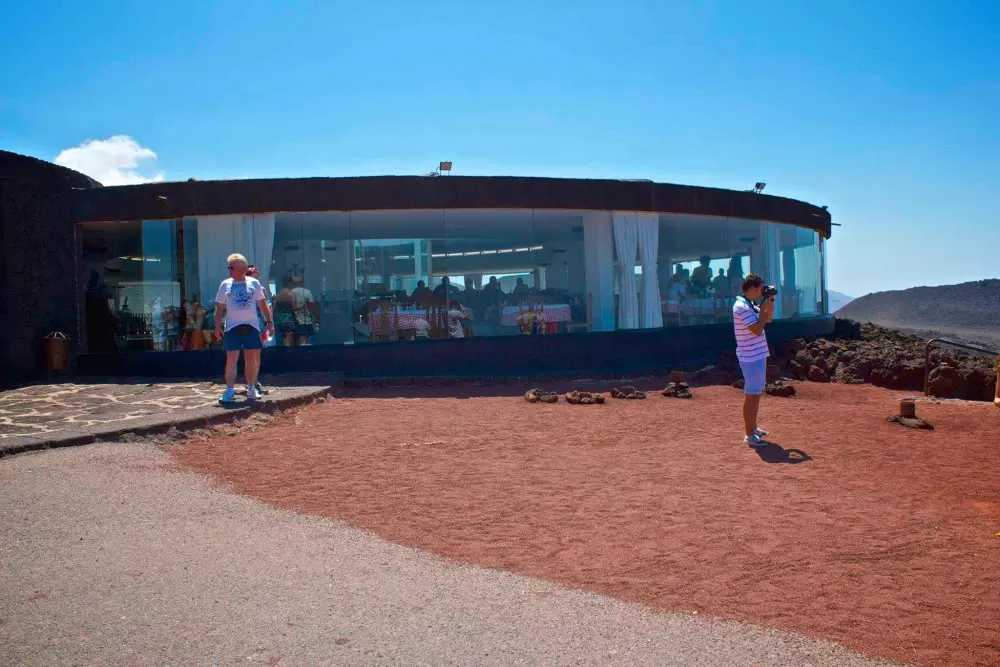
The restaurant design itself, with its brilliant architectural design and stunning panoramic landscapes was in fact the unique work of Manrique. It's geothermal cuisine at its very finest.
Los Jameos del Agua
The Jameos del Agua attraction is sculpted into part of a lava tunnel on the East coast of the island of Lanzarote. It's the end of a 6km stretch of tunnel that was created by the nearby Volcan la Corona. The lava tunnel is home to a subterranean salt water lake that is home to a unique species of blind albino crabs. If you look carefully into the water you'll see hundreds, if not thousands of them peacefully sat on the bottom of the pool.
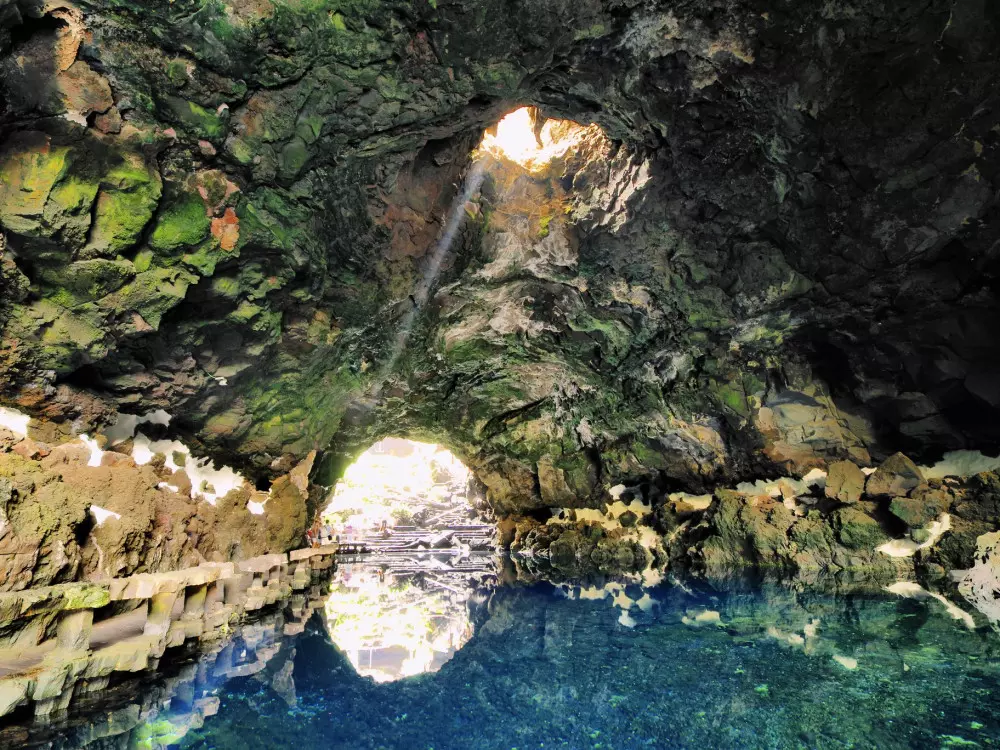
The real evidence of Manrique's work here is the whitewashed garden and kings pool. The white wash floor is very typical of Manrique's style and provides a clean, striking effect against the backdrop of the brilliantly blue Lanzarote skies.
Mirador del Rio
If you've got a head for heights and enjoy stunning vistas out over the ocean, then El Mirador del Rio is a 'must visit' attraction. This lookout sits at a magnificent height of 475m, built into the cliffs of Famara and looks out over the neighbouring island of La Graciosa and the Chinijo Archipelago Natural Park. On a clear day you'll also be able to make out further islands in the reserve, Alegranza, Montaña Clara, Roque del Este and Roque del Oeste.
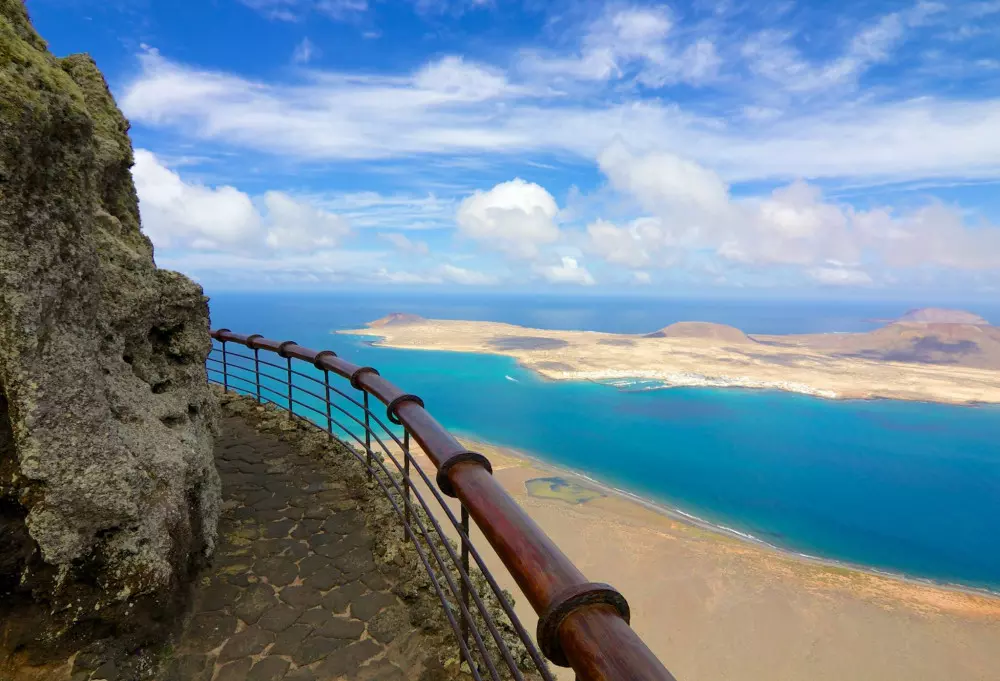
Whilst enjoying the views, Mirador del Rio also has a large cafe / snack bar area and a gift shop upstairs. So if you fancy a quick coffee stop, or some Lanzarote style souvenirs to take home then this is the ideal opportunity to do exactly that.
The Cèsar Manrique Foundation, Tahiche
It's only right that the once home of Manrique is now open as a showcase of his work and everything that he did for the island. The house was once his home, before he later moved further North to the village of Haria. Here you will see how he constructed the house into lava bubbles, connected by a series of tunnels. It's also evident that the house was constructed to let in as much lights as possible in the upper rooms. You'll also find examples of his art here, along with examples of creations by other great internationally renowned artists.
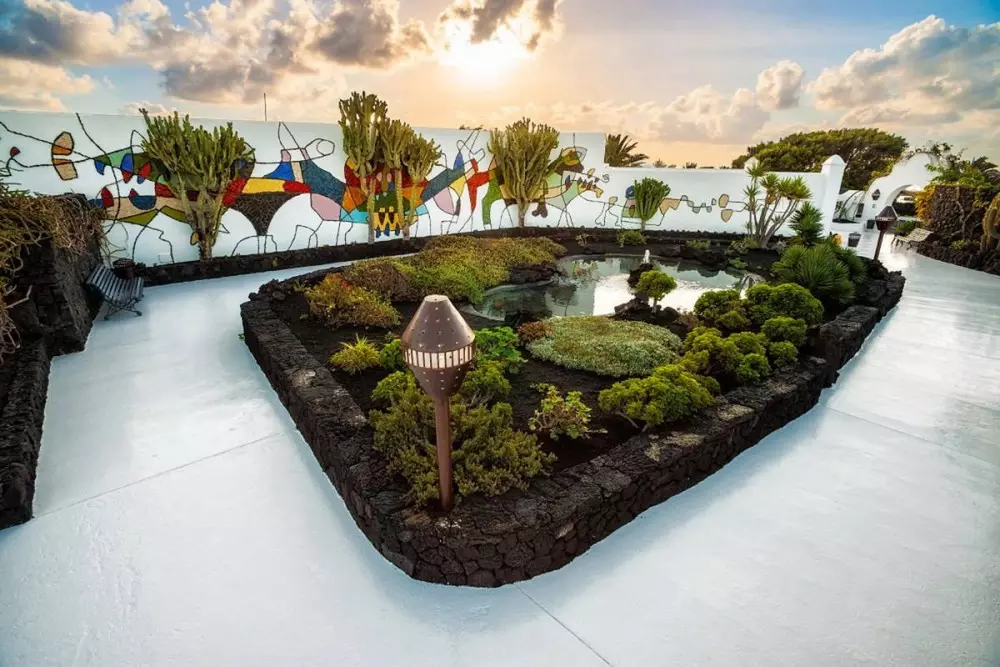
As is quite typical with Manrique attractions on the island, there is also a gift shop where you can also buy prints of some of his artwork. A must for any fan of the late Cèsar Manrique
Monumento al Campesino
Monumento al Campesino, San Bartolomé, was designed and constructed by Manrique in honour of the farming community on the island.
The large, white Monumento a la Fecundidad at the entrance is easily visible when approaching from the road and stands 15m high. Inside Monumento al Campesino you'll find a large spiral staircase that goes down to a number of small rooms where you'll often find local artisans show casing their work.
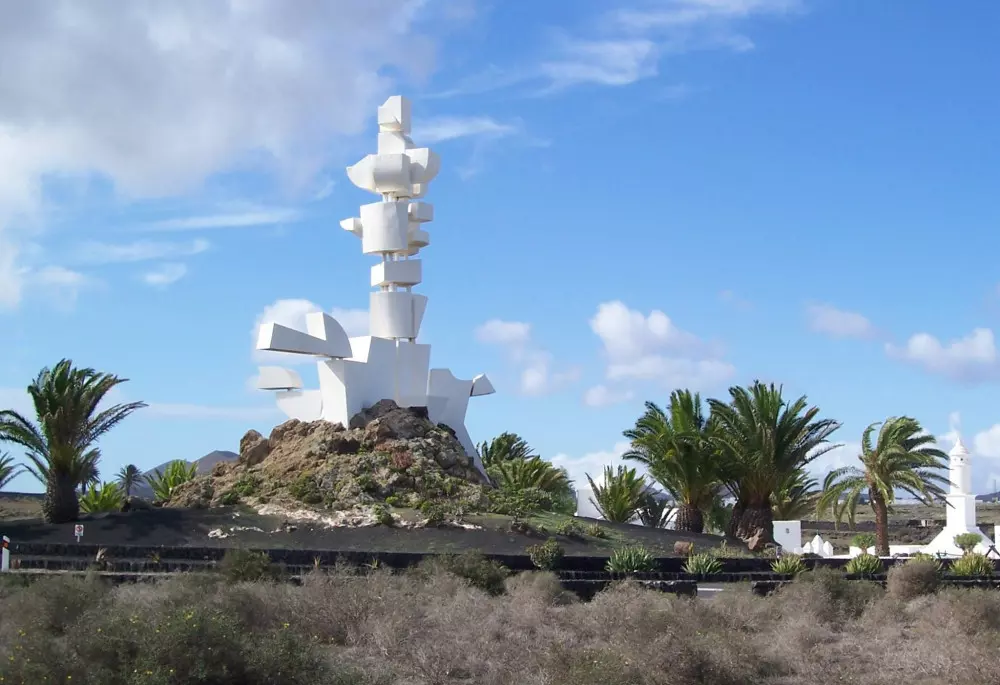
There is also a large function room here that is a popular local spot for weddings and events.
Images are licensed for use by TravelON.world and may not be reproduced without prior permission.